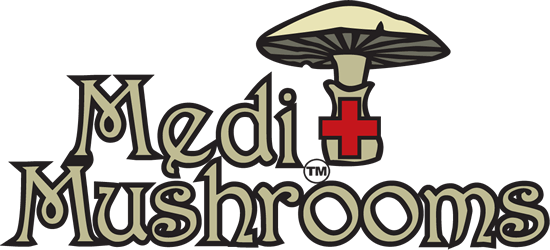*** IMPORTANT SHIPPING & DELIVERY NOTICE ***
Some international couriers continue to experience shipping delays.
We recommend you buy early and in bulk to avoid the impact of these delays.Buy More & SAVE Big!
- Tap for Navigation
- Dietary Supplements ▼
- » Dr Alla's Cordyceps
- » Dr Alla's Lion's Mane
- » Dr Alla's Maitake
- » Dr Alla's Reishi
- » Dr Alla's Shiitake
- » Testimonials
- Symptoms Chart
- Get Advice ▼
- » FAQ
- » Health Consultations
- Dr Alla's Insights ▼
- » Medical Conditions
- » Mushroom Properties
- » Research Info ►
- » » Medical Quotes
- » » Reference Works
- » » Mushrooms - Why Special?
- About ▼
- » Dr Alla's Story
- » Testimonials
- » Trade Enquiries
- » Contact
- Customer Info ▼
- » Access My Account
- » Track My Order
- Navigation
- Dietary Supplements ▼
- » Dr Alla's Cordyceps
- » Dr Alla's Lion's Mane
- » Dr Alla's Maitake
- » Dr Alla's Reishi
- » Dr Alla's Shiitake
- » Testimonials
- Symptoms Chart
- Get Advice ▼
- » FAQ
- » Health Consultations
- Dr Alla's Insights ▼
- » Medical Conditions
- » Mushroom Properties
- » Research Info ►
- » » Medical Quotes
- » » Reference Works
- » » Mushrooms - Why Special?
- About ▼
- » Dr Alla's Story
- » Testimonials
- » Trade Enquiries
- » Contact
- Customer Info ▼
- » Access My Account
- » Track My Order
What are Polysaccharides as the Components of Medicinal Mushrooms?
Polysaccharides are something that we are all familiar with under a different name - carbohydrates, which are basically sugar molecules.
These long chains of carbohydrate molecules, specifically polymeric carbohydrates (“poly” means many) are formed by monosaccharide units (“mono” means singular) that are “glued” together by glucosidic bondage.Monosaccharides are, in fact, the simplest form of sugar and the most basic units of carbohydrates, also called simple sugars.
What are examples of monosaccharides?
- Glucose
- Fructose
- Galactose
There are four types of polysaccharides:
- Storage polysaccharides – starch, inulin and glycogen
- Structural polysaccharides – chitin, cellulose, pectins and arabinoxylans
- Acidic polysaccharides – found in primary and secondary cell walls of plants
- Bacterial capsular polysaccharides – it is a layer that lies outside the cell envelope; these polusaccharides help in triggering the immune response and thereby lead to the destruction of the bacteria or other harmful pathogens
Nutritional polysaccharides are the main sources of energy for all living creatures, humans and animals.
Where are the polysaccharides found?
- Mushrooms / fungi
- Yeast
- Seaweed
- Cereal grains
- Roots and tubers of such plants as potatoes, cassava and manioc
- Legumes such as peas, chickpeas and beans
- Bacteria
The alpha glucans and beta glucans are the glucose molecules that form the polysaccharides in mushrooms.
Alpha glucans are so called because they are alpha linked and this is characteristic, for example, to starch and glycogen.
Beta glucans are so called because they are beta linked, which is characteristic for example, to starch and chitin.
What is the most abundant source of structural polysaccharides in nature?
- Chitin – is the predominant element of the cells of MUSHROOMS and some bacteria, the exoskeletons of crustaceans (crayfish, shrimp, lobster, etc.), insects (grasshoppers, cockroaches, ants, bees, cicadas, etc), arachnids (Scorpiones, spiders, etc).
- Cellulose – is a very important and most abundant structural component of the cell wall of mushrooms, green plants, many forms of algae and the oomycetes.
Though some animals are able to break down the starches into glucose, the humans cannot easily digest and metabolize cellulose or other polysaccharides such as chitin.
In order to support this very complex mechanism, we require some bacteria and microorganisms or some processes specifically designed for this purpose.
Chitin is incredibly valuable to human body because it contains the extremely important element called beta-glucan.
The problem is that we cannot digest the chitin in its “raw” form.
In order to make beta-glucans absorbable by human body, the “raw” material, for example, medicinal mushrooms have to go through the process of complex hot water extraction as the only proven method to ensure the beta-glucans’ bio-active properties are triggered and delivered in a digestible form.
Therefore, eating raw mushrooms in our salads has mostly one purpose, great taste and it look appetizing. But in this raw form the mushrooms do not provide any real nutritious benefit. One would get more nutritional value if these mushrooms are cooked, because the heat allows for the cellular structure to change and release the nutrients.
The medicinal mushrooms that have already been through the process of extraction must not be boiled/cooked as they will lose the nutritional properties at this stage.
The amounts of polysaccharides in medicinal mushrooms depend not only on the species, but also on the cultivating conditions. For example, our MediMushrooms Cordyceps, Lion’s Mane, Maitake, Reishi and Shiitake contain high amounts of polysaccharides, between 20%-40%.
What are the nutritional components of medicinal mushrooms?
- Polysaccharides
- Triterpenoids
- Sterols
- Prebiotics
- Antioxidant enzymes
- Amino acids (Arginine, Leucine, Lysine, Phenylalanine, Valine)
- Polyphenols
- Complete proteins
- Ergosteroids
- Peptides
- Alkaloids
- Coumarine,
- Mannitol
- Nucleotides
- Flavonoids
- Digestive enzymes
- Fibres
- Vitamins B, B12, D
- Minerals (Fe, Zn, Mn, K, P, N, Zn, Se, etc)
Medicinal mushrooms, such as Cordyceps, Lion’s Mane, Maitake, Reishi and Shiitake, are rich source of a large variety of nutrients that have proven to:
- Stimulate the immune system
- Reduce stress and anxiety
- Increase energy
- Reduce fatigue
- Boost brain power, memory and focus
- Strengthen the nervous system
- Improve digestion and gut health
- Nourish and protect skin health
- Help in fighting cancer/tumour
- Help maintain healthy cholesterol levels
- Help maintain healthy sugar level
- Provide antioxidant properties
- Reduce side-effects of chemotherapy and much more.
Please let me know if you have any more questions about polysaccharides and medicinal mushrooms,
Yours Dr Alla.
CONTACT INFO
021 227 9922 (NZ)
+64 21 227 9922sales@medimushrooms.co.nz
Skype: alla.kiroshka

Copyright © 2004 - 2024 MediMushrooms International Ltd
DISCLAIMER: The information on this website has been researched, reviewed and presented with all due care.
Nevertheless, the content is provided for general education and information only and should not be relied upon in making,
or refraining from making, any decision. It is NOT intended to replace medical advice from a healthcare professional.
All users are urged to seek advice from a qualified healthcare professional for diagnosis, treatment and answers to their medical questions.
Use products as directed. If symptoms persist, please see your healthcare professional.Specific results expressed herein are not typical. Individual results will vary.


